Wolfhounds: description of breeds, history, features of maintenance and upbringing
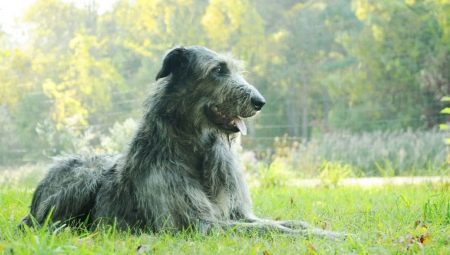
Dogs are one of the first animals to be domesticated by humans. Today, approximately 400 different species of these domestic animals are known. A special place in the provision of sentry and security assistance to people is occupied by wolfhounds.
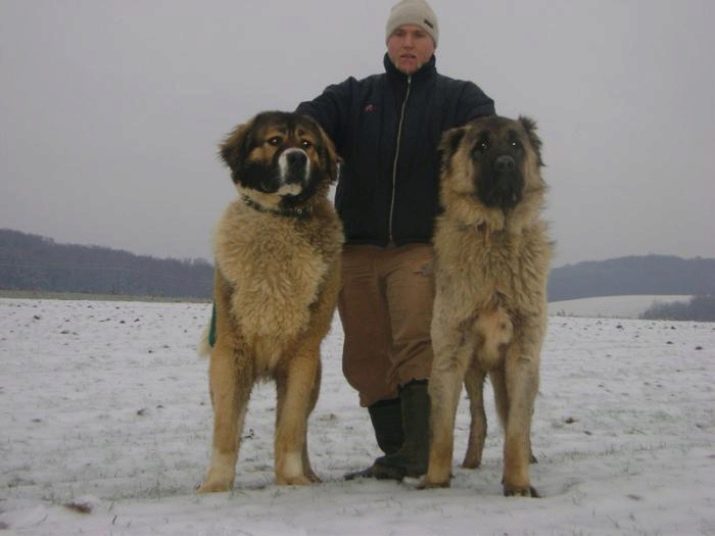
Origin story
Wolfhound is a common code name for large, brave and hardy dog breeds. It is difficult to determine the exact period of their origin. In ancient times, going with large herds of cattle to meadows remote from human settlements, shepherds took with them four-legged friends of impressive size who could repel predators.
In addition to their external dimensions, the dogs possessed sufficient strength and courage to withstand and defeat not only one wolf, but also a whole pack.
Having appreciated their skills and significance, people began to take animals for hunting, use them as watchmen and sled dogs. The need for such helpers arose among people everywhere, and in the course of selection in different parts of the world, various breeds were bred that met these requirements.
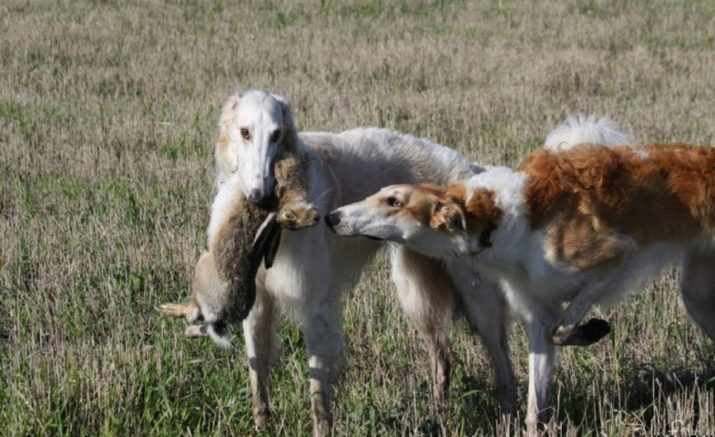
Now this group includes more than 10 dog breeds.
Description
Wolfhounds are characterized by a peculiar beauty and grace, their every movement is filled with strength and energy, but they look formidable and frightening. All representatives have similarities in appearance. They are characterized by:
- large size, muscular physique;
- developed physical qualities;
- massive elongated limbs;
- medium-sized head;
- long back;
- coarse thick shaggy coat.
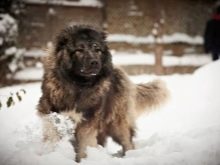
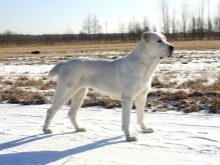
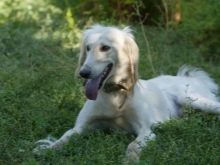
Dogs grow up slowly, they are considered puppies up to 2 years old. Until this time, hunting breeds are not advised to be hunted.Animals are adapted to living in various conditions, they tolerate heat, cold and rain very well. It is recommended to keep it in the yard of a private house.
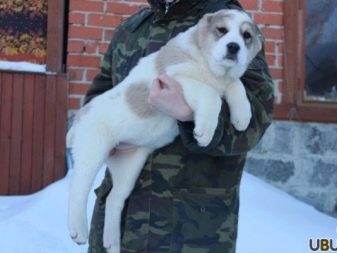
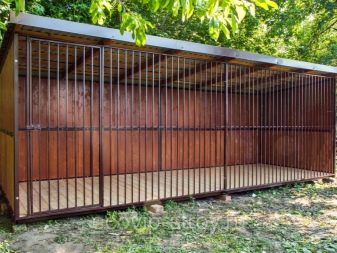
With proper care, life expectancy is 10-15 years.
Character description
Wolfhounds are divided into different species, from which the nature of the individuals largely depends, but nevertheless, certain features common to all types can be noted:
- loyalty and affection for the owners;
- fearlessness, ingenuity and intelligence;
- patience and endurance;
- striving for leadership;
- self-esteem;
- the need for a large personal space;
- they are relatively easy to train and train;
- they do not like the violation of their borders, they warn with barking and growling;
- need strict education.
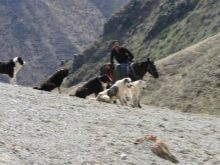
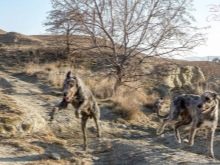

Despite the outward severity, dogs are very fond of the members of the family in which they live, and show them manifestations of their love. They are wary of strangers, because the main task of animals is ensuring the safety and security of households, which they perform with high quality.
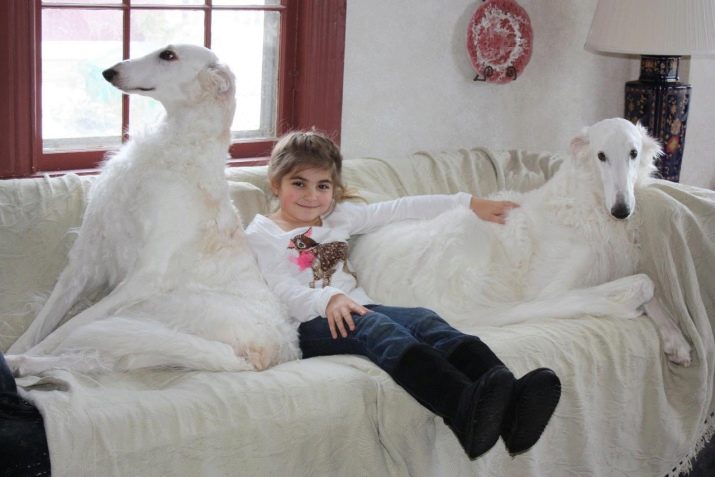
Views
People who want to get a wolfhound for personal purposes should understand that each species has its own characteristics.
Irish wolfhound
The breed was bred many centuries ago in Ireland. Refers to the type of hunting greyhounds. They grow up to 79 cm in height, gain weight up to 55 kg. The colors are different: black, brindle, wheat, fawn. They have a calm, balanced character. They are very loving towards the owners, they adore children. Enjoy the pleasure of walking with the whole family.
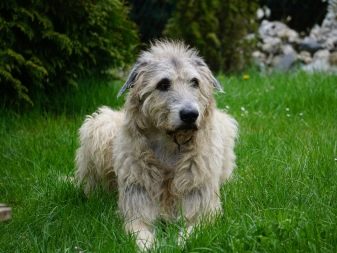
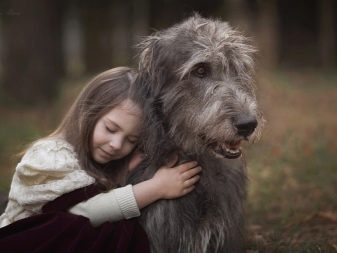
They like to run and play a lot, even as an adult.
They are smart, obedient, easy to train and educate, and therefore are suitable for inexperienced owners. They do not show aggression first, but the attackers will always be boldly rebuffed. Well, without anger and jealousy, they treat other pets. Irish people are not recommended to start as a guard dog, since they are friendly towards others.
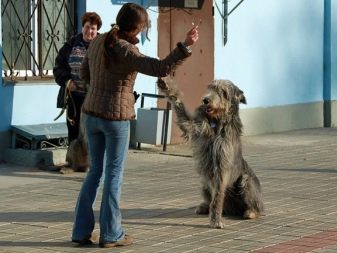
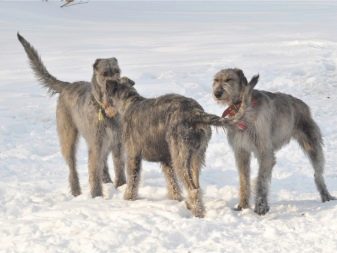
Caucasian Shepherd Dog
For the first time the breed appeared more than 2000 years ago in the Caucasus, its ancestors are Tibetan Great Danes. Possesses good qualities as a shepherd, guard and guard dog. Sheepdogs grow up to 75 cm, weigh an average of 70 kg, the largest representatives weigh 110 kg. The coat is usually gray, fawn, variegated, reddish and brown.
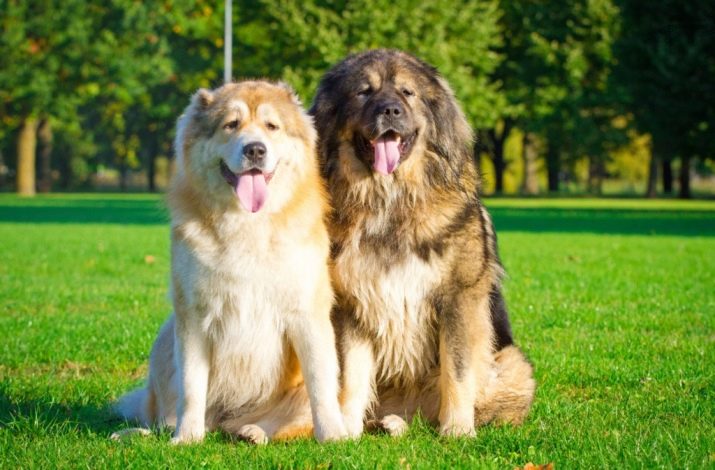
The impressive size hides a complex character, a loving heart and a devoted soul. They are distinguished by courage and perseverance. They become attached to the owners. Families show sympathy for children, love to play with them. But you cannot leave children with them without the presence of adults, since in the games they may not calculate their strength and power and accidentally drop the child. Strangers are treated extremely suspiciously. They get along with other pets, although they tend to dominate.

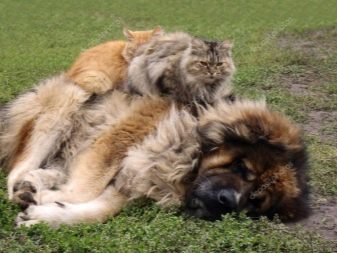
You need strict education and constant training.
Buryat-Mongolian wolfhound
It has an ancient origin, but is not widespread. Most often, dogs of this breed can be found in Buryatia, Mongolia and the Siberian region. Other names are also known: khotosho, Mongolian shepherd dog, banhar, dog of the Huns. "Khotosho" in the Buryat language means "yard dog", and "banhar" in Mongolian means "big, fat".

Height ranges from 62 to 78 cm, weight 50-72 kg. Basic colors: brown, gray, black and tan, red. The coat is not uniform in color, white or beige spots are usually present on the chest and legs.
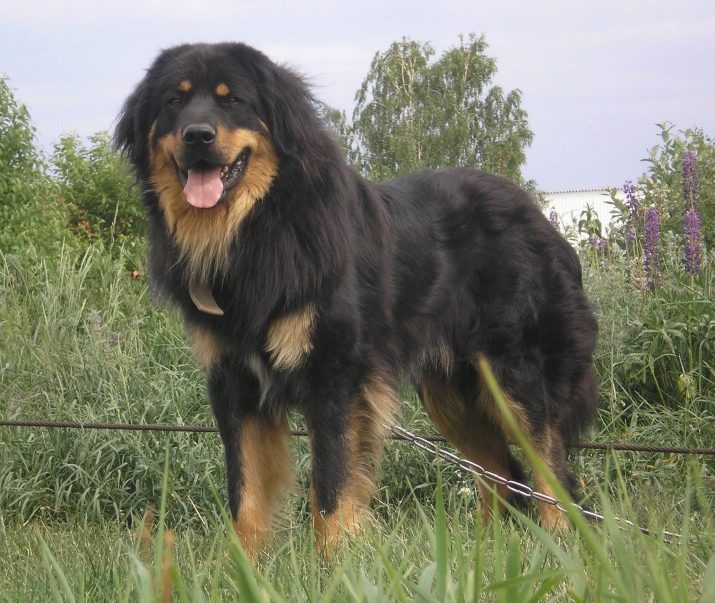
Dogs are loyal to home and family. They are smart, quick-witted, quickly learn commands. The territory entrusted to them is guarded responsibly. It is not typical for them to attack first, but in case of a threat, the owners always come to the defense.

Get along with other pets. They have a cheerful disposition, they like to spend time with children. Khotosho do not possess aesthetic features, and therefore are not suitable for people wishing to participate in exhibitions. But the dogs are reliable watchmen, good friends and companions.
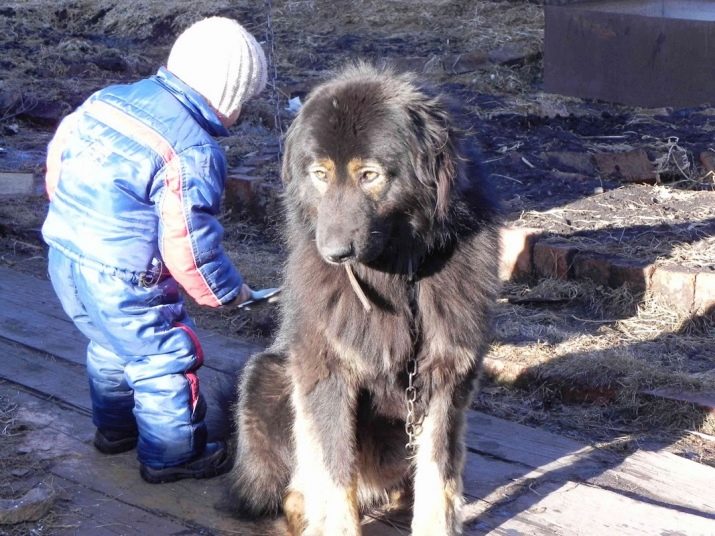
Alabai
Other names are also widespread: the Turkmen wolfhound and the Central Asian shepherd dog. The breed appeared as a result of natural selection and selection in Central Asia. Its ancestors are the great Asian and Tibetan mastiffs.
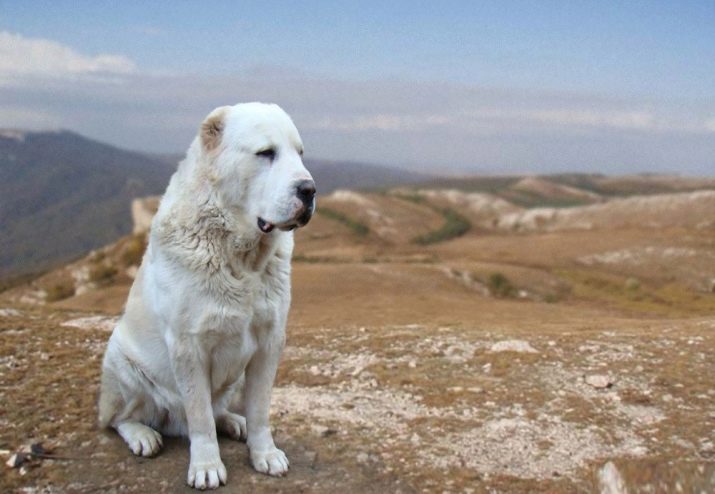
Height at the withers varies between 62-65 cm, weight - 40-75 kg. The color of the coat can be white, gray, brown, black, red, brindle, fawn, piebald or speckled. Alabai are very strong and brave, they can attack and defeat any predatory beast.
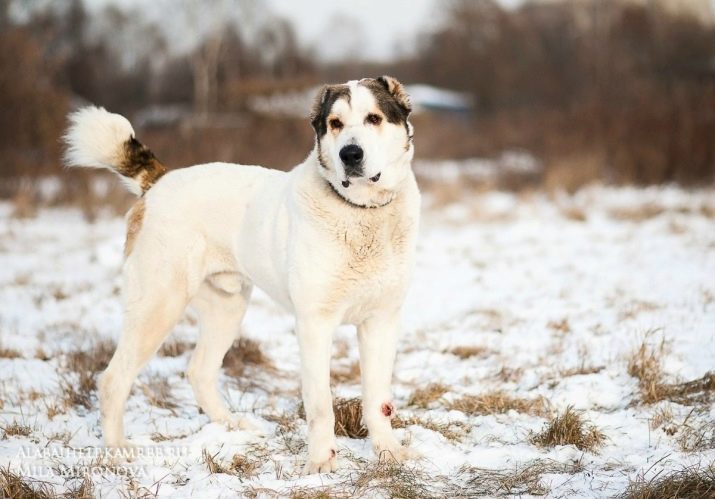
In ancient times, they were used not only for hunting wolves, but even for bears.
They are distinguished by independence, unpretentiousness, calm disposition and the ability to adapt to various situations. Are friendly with the owners, and especially with their children. Get along with other pets but if you have another dog in the house, then they show aggression, thereby denoting their main role. Behavior must be monitored on walks, in order to prevent possible aggressive attacks in time when other compatriots come into the pet's field of vision.
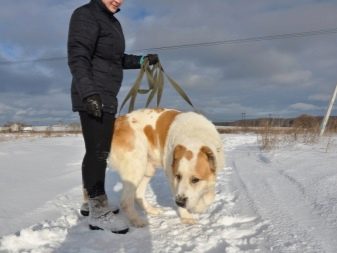
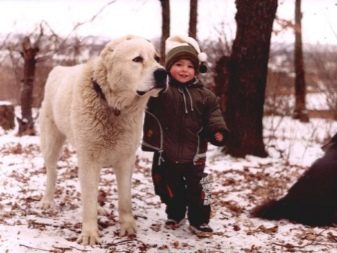
They need early education, it is advisable to carry out the first trainings under the guidance of an experienced coach. Dogs require frequent exercise and long walks. Possess sentry skills, suitable for security functions.
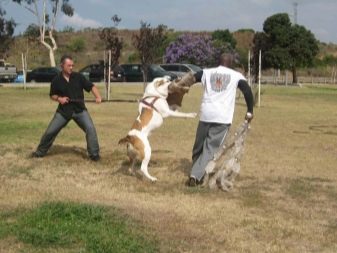
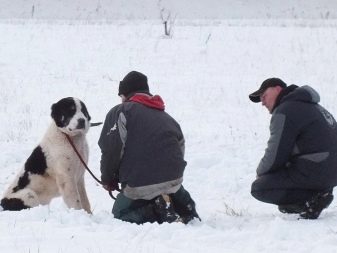
Tobet
The pedigree of the breed dates back to 1121 BC. NS. Dogs were widespread from Eastern Europe to the Far East. The main purpose is to protect the home and guard pastures. It also has another name: Kazakh Shepherd Dog. Tobet means “a dog sitting on a mountain”. Today this type of wolfhound is considered rare. In 2014, the National Bank of Kazakhstan issued a 500 tenge coin with the image of a tobet.
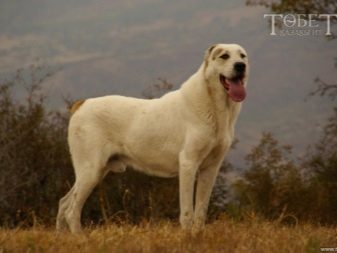
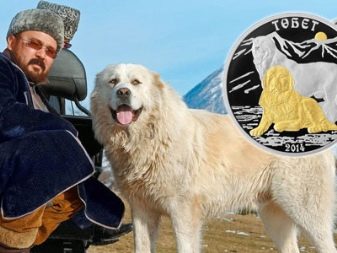
Outwardly they are similar to Alabai. Height is 66–76 cm, weight - 55 kg. According to the standard, they have a piebald or spotted color, often with large spots on the body. A calm, intelligent and noble nature hides behind a formidable look.
These dogs are born and fearless leaders, they need training from childhood with the involvement of a professional trainer. With properly organized upbringing and training, problems with animals do not arise. They recognize the authority of the owner and do not show aggression without reason.
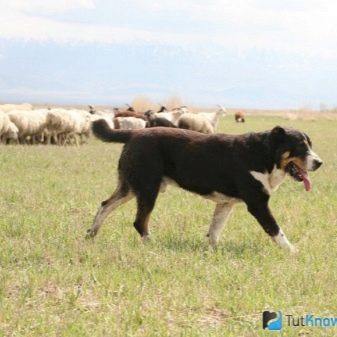
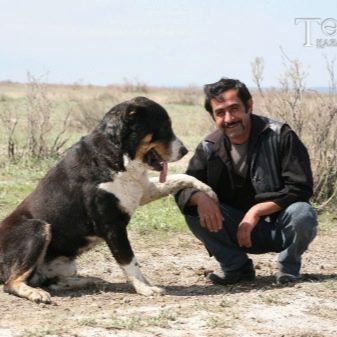
Psam is characterized by mobility and energy, frequent walks and physical activity are required.
Gampr (Armenian wolfhound)
In 2011, the International Kennel Union awarded this type the status of the national breed of Armenia. Nowadays, as in ancient times, these dogs are in the service of people: they guard housing and other objects, guard the herd, accompany on the hunt. They grow up to 67 cm tall and weigh about 60 kg.
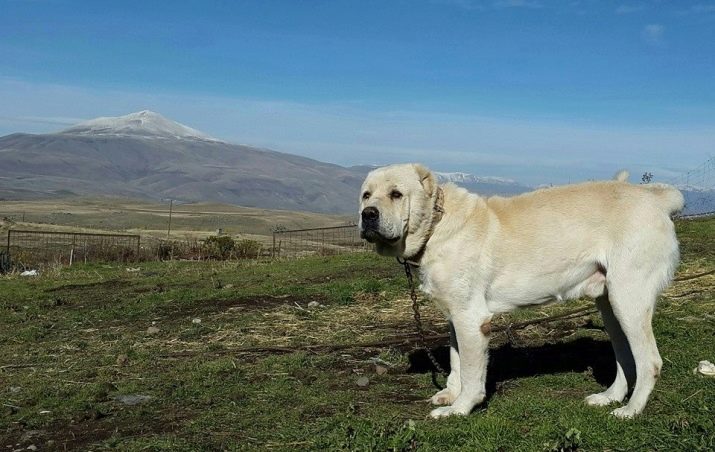
The colors are different, brown is considered undesirable for the breed.
The character combines independence and gentleness. Dogs are calm, feel connected to the family in which they live and loyally protect. Gampras need confirmation of their importance, they often feel great affection in the family for women, who are more often more open emotionally, and show affection and care towards them. They love children, make friends with other animals living in the house. Family guests are greeted calmly, without barking or growling.
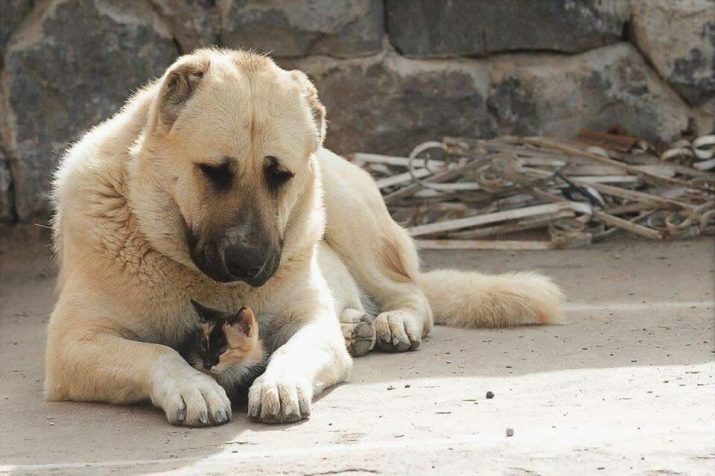
They have developed self-control, they show aggression only in cases of really extreme necessity.
Turkish kangal
Dogs of this breed are recognized as a national treasure of Turkey. It is forbidden to take them out of the country in order to avoid mixing with other breeds. But nevertheless, by some means in the 80s of the last century, representatives were able to leave the borders of their homeland and began to spread throughout the world, appeared in America and in Europe.
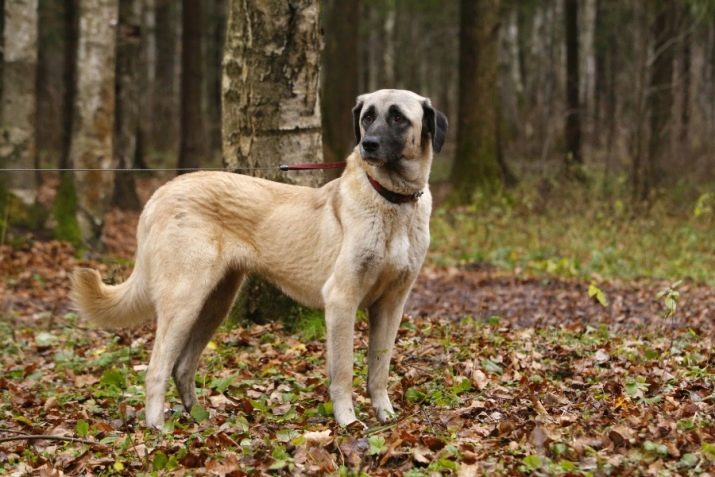
They grow up to 65–78 cm and weigh 40–70 kg. Wool of brown, beige, gray-yellow, gray-brown tones. White color is considered unacceptable for the breed. A kind of black mask is most often present on the face.
The dogs have excellent guarding skills, they diligently guard the territories entrusted to them. Kangals love their owner and try to be there at every opportunity. When a stranger appears in the presence of the owner, they carefully monitor his reaction. If they see goodwill, then they behave calmly and are allowed to stroke. They are indulgent towards children, they can withstand their gripping and other pranks. Ashow gression only in cases of danger.
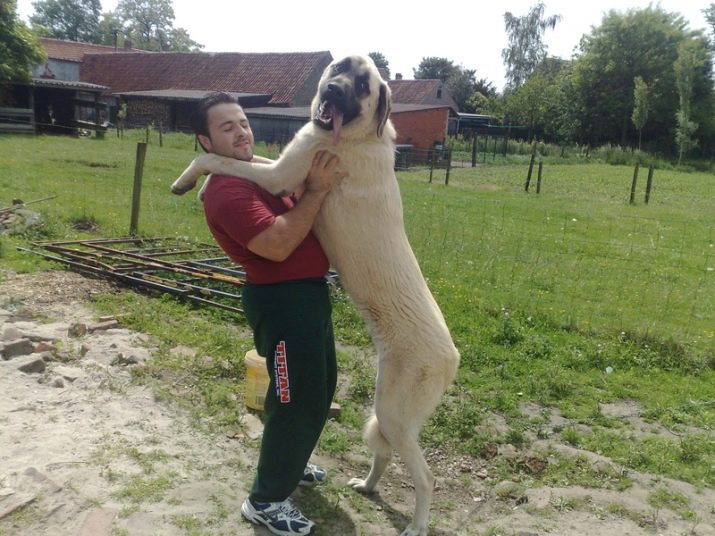
Education should be tactful, strictness should be in moderation, but at the same time, the dominance of the owner should be clearly indicated. Can't be trained like a service dog.
Russian hunting greyhound
The breed was developed in the 19th century in Russia. The growth of adults is 75–85 cm, weight is 37–47 kg. The colors are different: white, gray, forelock, murugy, sex, burmat, golden, black. Dogs have a sophisticated aristocratic appearance. A narrow build, long wavy hair, an elongated muzzle and a kind look give a special charm.
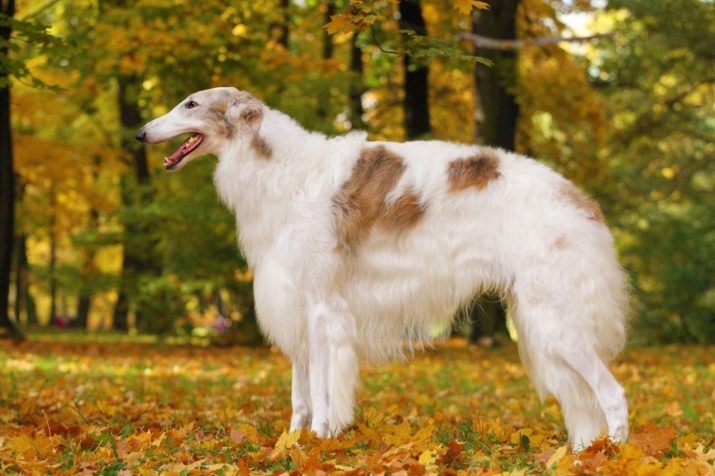
Hunting skills are well developed. The character is calm, but in conditions of hunting, at the sight of prey, they become aggressive. Thanks to graceful long legs, they are capable of very fast running, reaching speeds of up to 90 km / h. Hunting from an ambush can perform a 3-meter jump from the spot.
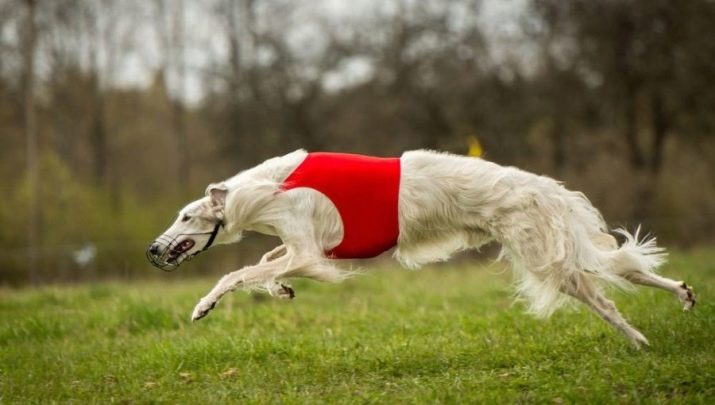
Eyesight and hearing are excellent: they notice hares moving in the field from a distance of 800 m.
Attachment to the owner is noted, are somewhat jealous of children, see them as competitors for attention, but at the same time they will never offend them... They can hardly endure loneliness. New people are treated neutrally, without aggression. Russian greyhounds are intelligent and easy to train. Unlike other wolfhounds this breed is suitable for keeping not only in a private house, but also in an apartment.
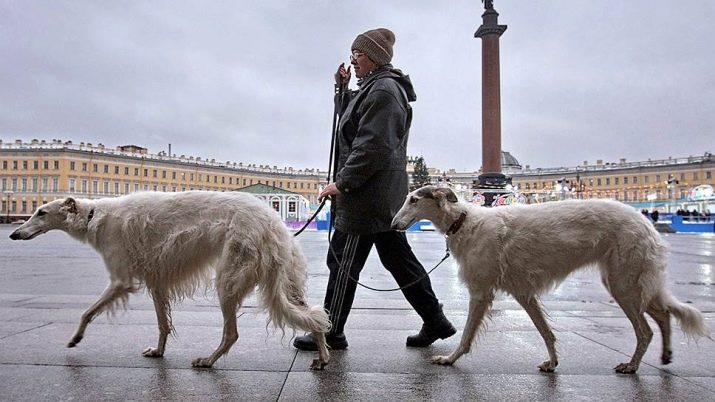
Walking should be about 3 hours a day and be accompanied by exercise.
Taigan (Kyrgyz greyhound)
The breed belongs to the class of Central Asian greyhounds. Place of origin - Kyrgyzstan. Height at the withers - 60–75 cm, weight - 25–33 kg. The coat is elongated, soft. The colors are gray, white, reddish, sexual, black with white markings, and forelock.
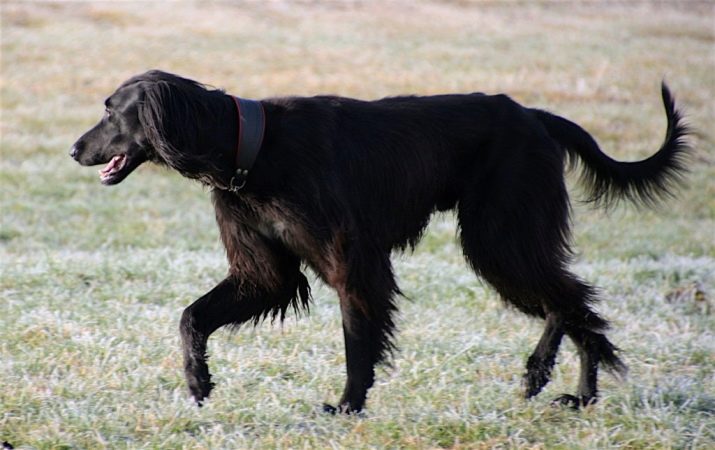
The main feature is the ability to hunt in mountainous conditions. They are attracted to hunt fox and badger. In the group form of hunting in a team of 2-3 dogs, they are able to overwhelm a wolf, argali (mountain ram) and mountain goat.
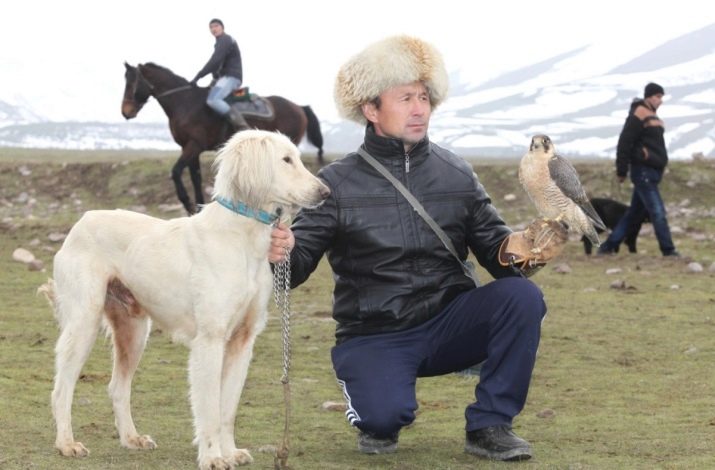
They are often used in joint hunting with golden eagles.
Dogs are characterized by courage, vigilance, agility and speed. In addition to hunting skills, sentry skills are well developed. Loyal to their owners, they love children. They are very independent and balanced, they can easily endure separation, the dogs can be safely left at home. They like long joint walks with the owner.
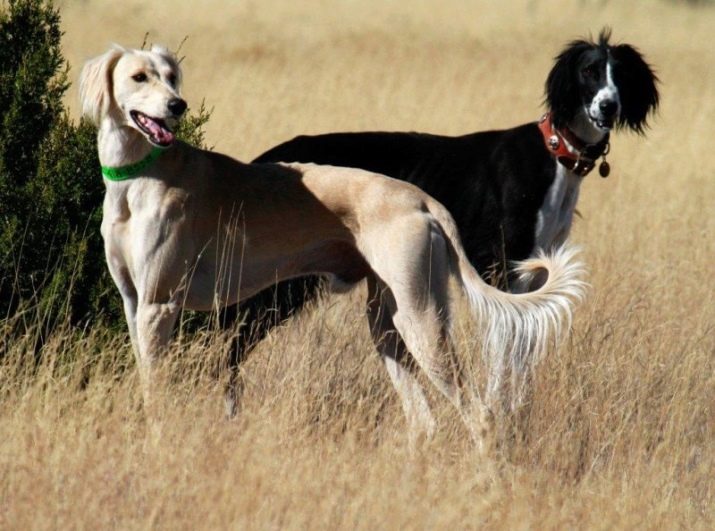
Content rules
For the full development and manifestation of their best qualities, wolfhounds need space. The living conditions of the apartment are not suitable for them (with the exception of the Russian greyhound). You need to keep in private households, it is better in aviaries, and not on a chain. Freedom of movement is necessary, without it they can become destructive and bark for no reason.
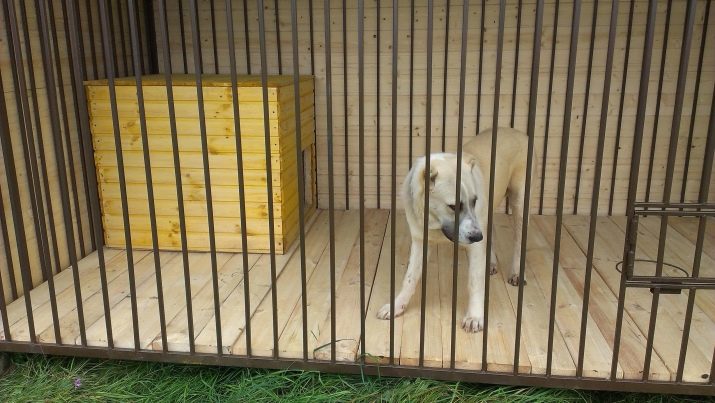
But even if there is a large enclosure, walks are needed for physical activity. Dogs love to run fast, but they should only be allowed to do so in a safe and free area.
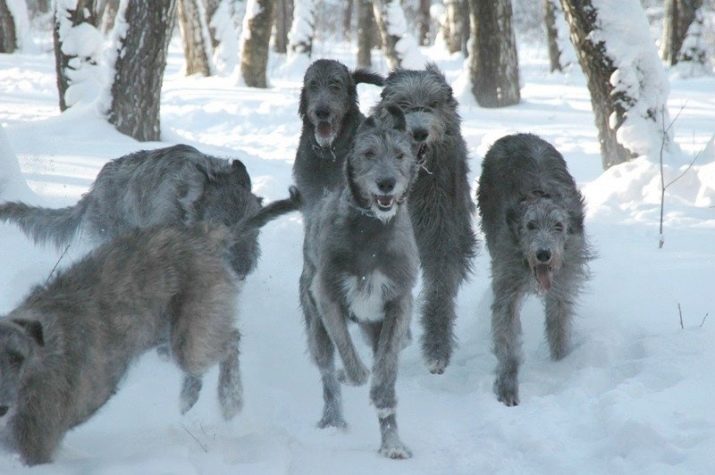
During city walks, be sure to keep on a leash.
The coarse coat is easy to care for. It is enough to comb 1-2 times a week. It is necessary to accustom to this procedure from childhood, so that in the adult state, the wolfhounds do not resist her. Bathing is enough once every 2 months, but if the dog gets very dirty, it can be done more often. The nails of dogs living in private houses with a yard or plot are most often grinded off themselves, but their length must be monitored and, if necessary, shortened.

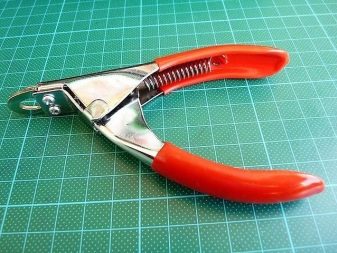
There is a common misconception among owners that wolfhounds have strong immunity and do not need vaccinations. But during the period of active growth of puppies and changing teeth, it decreases significantly, and the risk of catching an infection increases. Therefore, it is better to protect pets and carry out routine vaccinations from 4-8 weeks of age and then in accordance with the vaccination schedule.

Feeding
Nutrition should be balanced. Care must be taken to match the calorie intake with the expenditure. Overfeeding is undesirable, as it does not have the best effect on the health of animals. Puppies are given food 4 times a day, while adult dogs should only have 2 meals. The daily diet should include meat, preferably beef or veal.
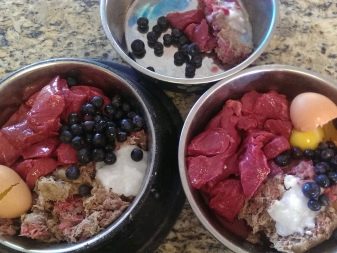
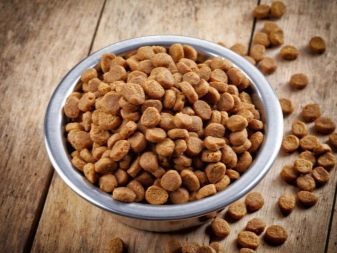
If preference is given to ready-made feeds, then it is important to correctly calculate their volume in accordance with the weight of the four-footed friend.
With natural nutrition be sure to use special vitamins, since the lack of trace elements negatively affects the condition of the coat and the work of internal organs. Due to their large size, wolfhounds experience stress on the joints, therefore special attention should be paid to a sufficient intake of calcium in their body.
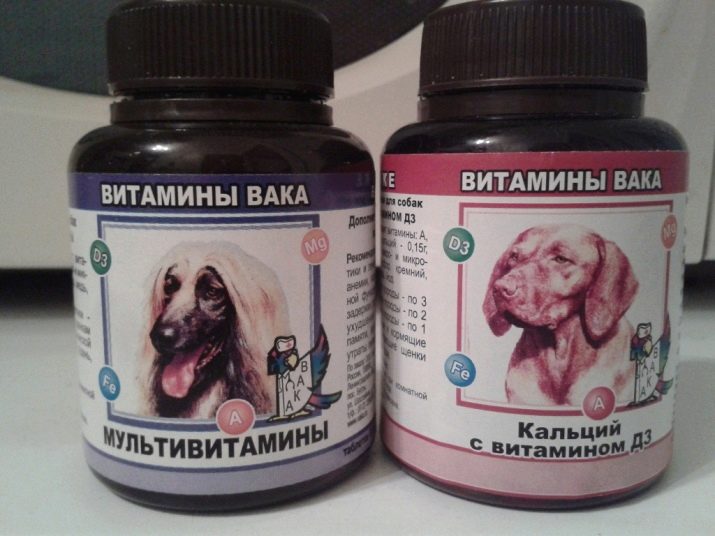
Upbringing
The growing up of wolfhounds is delayed for 2 years, during which time their character and relationships with family members are formed. During this period, efforts must be made to educate and socialize them.
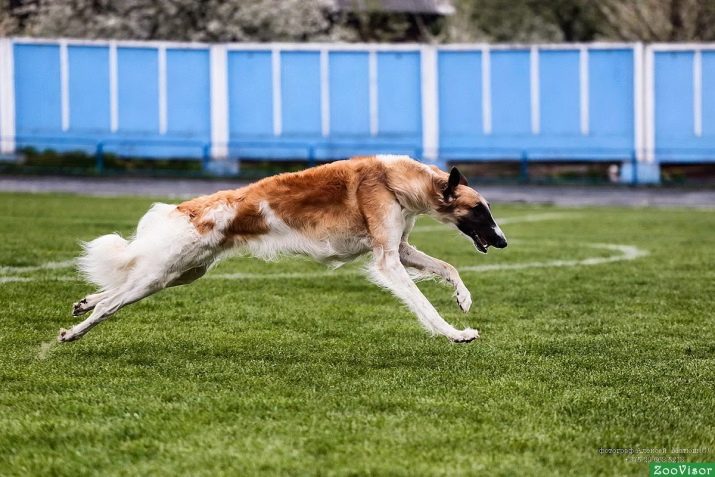
Training can help in this, which should be started as early as possible.
It is necessary to demand obedience from puppies so that they realize that it is impossible to disobey the owner. The execution of commands should be brought to automaticity, although this can take a lot of time. It will not be superfluous to contact professional trainers during the first trainings. With the strictness of the owners, puppies learn quickly. But if disobedience is allowed several times, intelligent animals will understand that the requirement can not be fulfilled, and maximum efforts will have to be made to restore obedience.
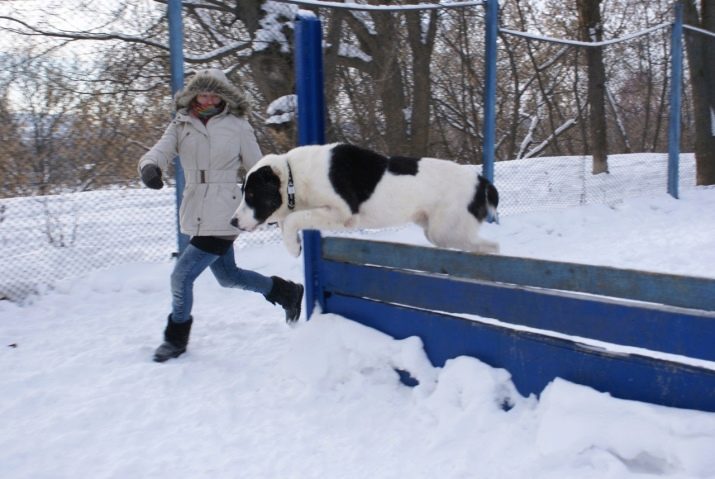
When walking, puppies should be socialized with other breeds. In the absence of aggression from other dogs, small wolfhounds should be given the opportunity to communicate with them. The manifestation of unreasonable aggression, especially in relation to small dogs, must be suppressed with a loud, imperious voice. Growing up wolfhounds must learn that you cannot attack fellows. With proper upbringing, wolfhounds become disciplined by the end of the first year of life, and communication with them will give the owners pleasure.

For the features of wolfhounds, see below.






































